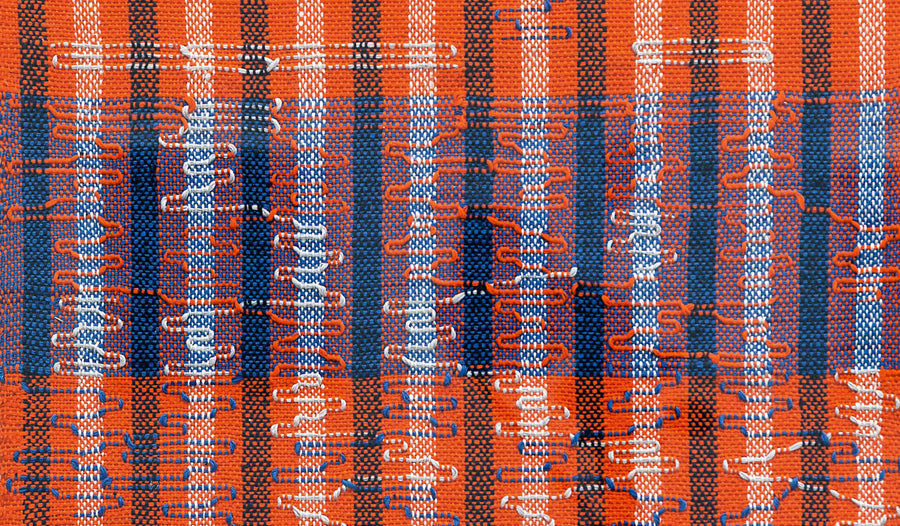
Backstrap Weaving Workshop

Image: Anni Albers, Intersecting (1962). Pictorial weaving, cotton and rayon, 40 x 42 cm. Photograph: The Josef and Anni Albers Foundation/Artists Rights Society
Anni Albers got into weaving by chance. Born in Berlin in 1899, she applied twice to the Bauhaus, hoping to study painting and drawing. However, at the time women students were ‘encouraged’ to take up weaving in the ‘women’s’ workshops, which Albers did in 1922. She quickly fell in love with the method, process and mechanisms of weaving and devoted her life to exploring it. She became an influential teacher there before emigrating to the United States with her husband Joseph Albers in 1933, where they nurtured students at Black Mountain College and Yale University. Her ideas about modern art and weaving, however, were profoundly shaped by countless trips to Mexico, Peru and Chile; their indigenous textiles become a source of inspiration to Albers, especially Peruvian weaving, which she often literally unpicked to understand better.

Image: Anni Albers in her weaving studio at Black Mountain College, 1937.
As a textile artist, Anni Albers was drawn to the traditional weaving styles and techniques of Mexico's indigenous artists and incorporated them directly into her own work and teaching. In Oaxaca, local weavers taught her to use the Peruvian back-strap loom, a simple and highly portable device that nonetheless enabled patterns of astonishing complexity. Albers was so enamored of the back-strap loom that she used it to teach her students at Black Mountain College. As she told an interviewer for the Smithsonian Archives of American Art, "the Peruvian back-strap loom has embedded in it everything that a high power machine loom today has." She approached the indigenous art of Mexico with an appreciation for its technical sophistication and endurance. In her practice, she didn't see herself as the culmination of, or more advanced than these techniques, but another weaver as part of this age-old tradition.
Image: Albers' students weaving using a back-strap loom.
On Saturday 24 and Sunday 25 April we will be hosting a backstrap weaving workshop which will be run by Concepción Tharin, who will guide participants through weaving on a traditional Mayan back-strap loom in the tradition of her area of Guatemala. Concepción is a Q’eqchil’ Mayan woman from the village of Samac near Cobán, Alta Verapaz, Guatemala, and was taught by her mother and sister to weave at the age of eight. Now she has mastered her local style, an intricate gauze-like weave called pikb’il. By the end of the workshop participants will have completed their own beautiful and delicate piece of fabric suitable for a placemat or table runner, or to adorn your walls as a hanging.
To find out more about this workshop, visit our workshop page: Backstrap Weaving with Concepción Tharin
Read more about Anni Albers in our article Fruit of the Loom: The Weaving of Annie Albers (page 66 - 71) in Selvedge Issue 84 Surface.
